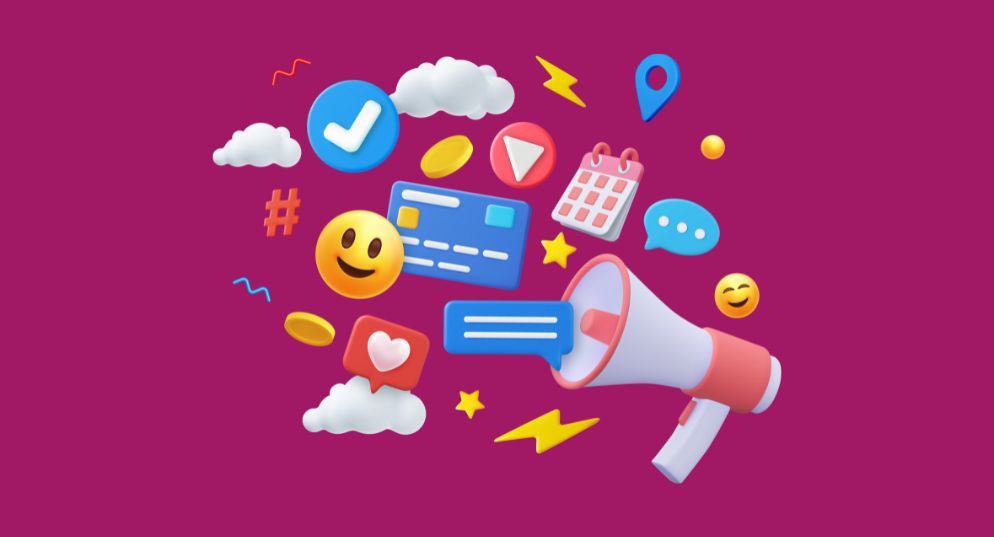Cloud based solutions B2B: Advantages and more
CLOUD BASED SOLUTIONS B2B: ADVANTAGES AND MORE
In this article you will find out more about cloud based solutions and how b2b businesses take advantage of them.
In this article:
- Cloud based solutions B2B: Digital signage and more
- Cloud computing simply explained
- Cloud computing and the advantages for businesses
- Cloud server digital signage
- How safe are cloud services?
- Conclusion
- FAQ
Cloud based solutions B2B: Digital signage and more
Digitalization makes businesses rethink their working processes and also more flexible as well as adaptive. Cloud based solutions for businesses offer many advantages and strengthen the position of a company against its competitors.

Cloud computing simply explained
The term “cloud” is defined in many different ways. Most people see it as a way to get access to content without a required internet connection. Others point out the advantage that no storage space is needed. Simply explained, cloud based solutions give the possibility to location independently save data as well as to be able to get access to them location independently.
Many people associate cloud based solutions with services such as Google Drive but the possible applications go further. Cloud based solutions even offer a location independently application, best example: Digital signage software. The cloud based usage of digital signage pursues the goal that businesses can display video and picture content without an internet connection. Other than that, businesses take advantage of provided servers. The storage of data is a good usage as well but the main advantage lies within the uncomplicated access to content and to show it to potential customers. Therefore, cloud based solutions not only offer a good way to save data but also to overcome communication boundaries with customers.
Cloud computing and the advantages for businesses
Switching to cloud based solutions means that businesses are given more advantages in the process of using and providing digital signage solutions. As the possibilities are not exclusively limited to save data, there are also advantages regarding costs and hosting.
Better organization and more flexibility
Cloud based solutions B2B provide a flexible as well as uncomplicated execution of applications within a service. The centralized data saving offers more safety when it comes to technical problems and is followed with fixing them fast thanks to the hosting service.
Save data storage
Worries regarding the safety of cloud computing are unjustified when you rely on a serious provider. Data management happens over a professional protected data center.
Competition advantages and focus on competences
Cloud computing means to automate processes and that makes it easier to implement further processes or new applications. That comes with advantages in competition with others and the automated processes enable a better focus on the core business.
Flexible display of media
Cloud based solutions offer more flexibility, especially for digital signage software. Once the content is created, displaying it can easily be done with the help of cloud based solutions.
Less costs
More flexibility, less costs for human resources and uncomplicated possibilities to adapt come with less costs.
Breakdown safety
Cloud based solutions require maintenance work on a regular basis and meet high safety standards. The sudden loss of important data is therefore almost impossible to happen.
Cloud based solutions B2B not only come with advantages regarding flexibility in data saving but optimize the whole working process of a company. Businesses save money, centralize working processes and come with benefits in competition with others.
Cloud server digital signage
Cloud based solutions for businesses are diverse and are available in many different fields. With digital signage software it’s also possible to use a cloud and display content easily. Through the central data saving, you have access to content every time you need it and you get your own individual access for registration.
Thanks to cloud based digital signage solutions you won’t have to pay for establishing your own server and important updates as well as maintenance are done by the hoster. Because of that, maximum safety is provided and your focus is on the core business of your company.
That comes with the possibility to provide cheap license and subscription models. Your own server and maintenance work are expensive – often, unexpected problems occur and you have to pay even more. Cloud solutions for digital signage businesses create a clear cost structure to good conditions.
FRAMR. EASY AND INTUITIVE DIGITAL SIGNAGE SOLUTION
Show digital media content on common displays like consumer or professional screens or even LED walls! That’s simple digital signage, and that’s how we support your work with FRAMR. The answer for easy and intuitive management and presentation of media content.
FRAMR uses its own and safe cloud, based in the European union. It is supported by a connected Content Delivery Network (CDN) for safe delivery. We provide maintenance work and offer central data saving in exchange for fair subscription prizes. Our products connect with different devices and come with many advantages, starting from the amount of data you can save within the cloud to high quality resolution and powerful processors. Oor products are all GDPR compliant.
Recommended reading → 7 underestimated advantages of business digitalization
How safe are cloud devices?
Many people argue that cloud based solutions aren’t safe when it comes to protecting data but you don’t have to worry about it. The communication between internet service and local disk is cryptic. Therefore, it’s safe from hackers. Other than that, cloud based solutions mostly require passwords which provides more safety.
But there is no guarantee that you won’t lose your data. Weaknesses in programming may lead to the loss of data and average saved registrations might leave hackers a chance for a strike. Many people can’t figure out how safe cloud services are and that makes them worried the most – especially because cloud based solutions offer such good services makes people worried that something unknown might cause a bigger problem.
How safe is FRAMR?
When using FRAMR, you won’t have to worry about such problems. Our cloud system provides safe data administration and hosting as well as crypting working processes to prevent hacker strikes. We are responsible and want to offer safe solutions as well as we hold up to standards as we regularly finish required updates and do the maintenance work for you.
Conclusion
Cloud based solutions for businesses are an important factor in competing with others. Providers have many advantages because it makes organization easier and investing for server hardware is not necessary. But even consumers have advantages because being local independently as well as not being dependent on an internet connection provides the easy and uncomplicated service potential customers want.
FAQ
Below we answer some of the most frequently asked questions about cloud based solutions.
Cloud storage is a computing model which saves data in a logical pool (cloud). That gives the possibility to get access to saved data without having to have an internet connection.
Data in a cloud is safe because the communication between server and local disk is cryptic. Unwarranted access is not possible because of safety standards and password requirements.
Resource pooling describes the process in which providers of cloud software give many users access to their server.
Centralized data saving is GDPR compliant when users accept the terms of services and allow the processing of personal data.
Contact us
Pictures: © Canva.com







